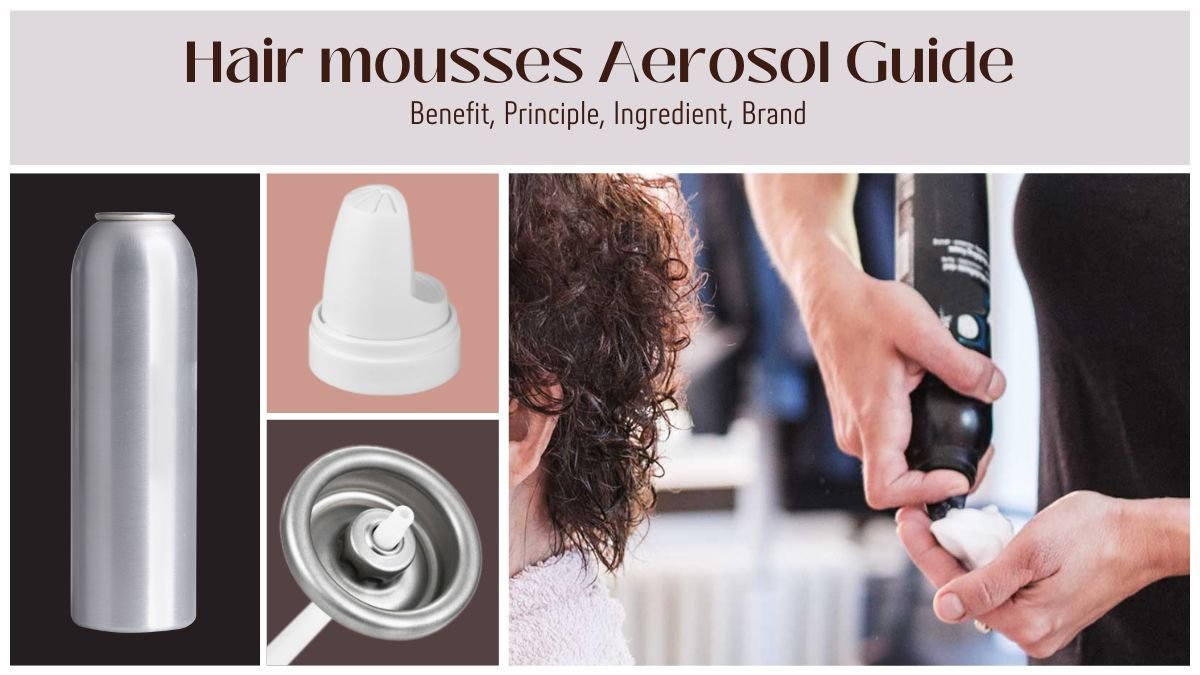In the ever-evolving world of haircare, foam conditioners are making waves, promising lightweight hydration and effortless styling. But how do they stack up against traditional cream or liquid conditioners? The star player in this matchup is the aerosol can, a sleek delivery system that’s shaking up the game. As an aerosol can expert, I’m here to break down the pros and cons, share practical tips, and answer common questions about foam conditioner aerosol cans. Whether you’re loyal to old-school methods or curious about modern tech, this guide will help you decide which conditioner deserves a spot in your routine.
The Basics: Foam vs. Traditional Conditioners
Foam conditioners are the new kids on the block, delivering a frothy, mousse-like texture that hydrates, detangles, and boosts volume without weighing hair down. Traditional conditioners, whether creamy or liquid, rely on heavier formulas that can sometimes leave residue, especially on fine or oily hair. The key difference? Foam conditioners use aerosol can technology to transform liquid into a light, airy foam, ensuring even application and minimal waste.
Traditional conditioners often come in pump bottles or tubs, which can expose the product to air and bacteria, reducing shelf life. Aerosol cans, on the other hand, are sealed tight, keeping the conditioner fresh for up to two years. While traditional options excel at deep conditioning for thick or dry hair, foam conditioners shine for those seeking lightweight volume and quick styling. It’s a classic case of old reliable versus new and nimble!
How Aerosol Cans Change the Game
Let’s get technical for a sec about aerosol cans. These aren’t just shiny containers—they’re precision-engineered systems designed for performance. Inside, you’ve got the conditioner, a propellant (like butane or isobutane), a valve, and an actuator (the button you press). When you press the actuator, the valve releases a measured mix of product and propellant, creating that fluffy foam. It’s a controlled, mess-free setup that traditional bottles can’t match.
Pro tip: Shake the can like it’s a maraca! A solid 10-second shake blends the propellant and conditioner, ensuring a rich, uniform foam. Skip this, and you might get a watery spray that’s more dud than dazzle. Another trick? Store your can upright in a cool, dry spot to prevent clogs and keep the propellant evenly distributed. These habits give aerosol cans a leg up in consistency.
A Closer Look at Foam Conditioner Aerosol Can Products
Foam conditioner aerosol cans come in sizes to suit any lifestyle, from 50ml travel minis to 250ml cans for daily use. Smaller cans are perfect for slipping into a purse or carry-on, while larger ones keep your bathroom stocked for weeks. Most feature a standard 1-inch valve, compatible with various actuators for smooth foam delivery. The aluminum build is lightweight, durable, and 100% recyclable, making it a win for eco-conscious folks.
These cans are tailored to specific hair needs. Some are formulated for fine hair, dispensing a super-light foam to boost volume without residue. Others target curly hair, producing a denser foam to define spirals. For color-treated hair, look for cans with UV-protective ingredients to preserve vibrancy. Here’s a sneaky hack: If the foam feels too heavy, dispense a small amount into your palm and mix in a drop of water. This lightens the texture, making it perfect for finer strands or looser curls.
Application: Foam vs. Traditional Techniques
Applying foam conditioner is a breeze compared to traditional methods. Hold the aerosol can 15-20 cm from your hair and spray in short bursts, focusing on the mid-lengths and ends where dryness tends to creep in. Comb through with your fingers or a wide-tooth comb for even coverage. Less is more here—a golf ball-sized blob is plenty for medium-length hair. Traditional conditioners, by contrast, often require more product and longer rinse times, which can be a hassle for busy mornings.
Clogged nozzle? No sweat! Rinse the actuator under warm water to dissolve any dried conditioner—a common quirk with foam’s creamy consistency. For sensitive scalps, opt for cans with soothing ingredients like aloe or chamomile. And here’s a little-known gem: Some foam conditioners double as styling aids! Look for formulas with light hold to shape your look while keeping hair soft, something traditional conditioners rarely offer.
Foam Conditioners: The Pros and Cons
Foam conditioners excel in lightweight hydration and volume, making them a go-to for fine or flat hair. Their aerosol can delivery ensures precise application, reducing waste compared to the sometimes gloopy traditional formulas. They’re also travel-friendly and quick to apply, perfect for on-the-go styling. However, they may not provide the deep conditioning needed for very dry or damaged hair, where traditional creams often shine.
Traditional conditioners are great for intensive moisture but can leave residue on finer hair types. They’re also more prone to contamination in open containers. Aerosol cans, with their sealed design, offer a hygienic edge and longer shelf life, but they require proper shaking to perform. It’s a tradeoff—foam for speed and volume, traditional for heavy-duty repair.
Environmental and Practical Considerations
Aerosol cans have a green streak that traditional bottles can’t always match. Aluminum cans are infinitely recyclable, meaning they can be remade into new cans without losing quality. Many manufacturers are also using lighter designs to reduce material use, boosting sustainability. Traditional plastic bottles, while recyclable, often end up in landfills due to lower recycling rates.
From a practical standpoint, aerosol cans are easier to use, requiring just a light press compared to the arm workout of pump bottles. They’re also tamper-proof, ensuring the product stays pure. Traditional tubs, while budget-friendly, can be messy and less hygienic over time.
Troubleshooting Aerosol Can Issues
Even top-notch aerosol cans can hit a snag. Uneven foam? You probably didn’t shake enough—give it a solid 10-second rattle. No spray at all? The propellant might be running low, signaling the can’s nearly empty. Buildup on your hair? That’s a sign you’re using too much product or skipping clarifying washes. Start with a small amount and shampoo weekly to keep your locks residue-free.
For stubborn clogs, soak the actuator in warm water for a minute. If that doesn’t work, check the valve for dried product—a gentle clean can often revive the can. These fixes come from years of hands-on tinkering with aerosol cans, so you’re getting the real deal!
Foam Conditioner Aerosol Can FAQs
1. How do I know if my aerosol can is empty?
If it feels light and only hisses air, it’s done. Shake it—if no liquid sloshes, recycle it.
2. Are aerosol cans recyclable?
You bet! Aluminum cans are 100% recyclable. Remove the plastic actuator and check local recycling rules.
3. Why is my can spraying liquid, not foam?
You didn’t shake it enough! A 10-15 second shake mixes the propellant and conditioner for perfect foam.
4. Are aerosol valves tricky to source for replacements?
Nope—1-inch valves are standard and readily available from packaging suppliers, meeting demand with ease.
5. Can I use foam conditioner on dry hair?
Totally! A small amount on dry hair tames frizz or adds a quick moisture boost. Use sparingly to avoid buildup.
6. How long does a 200ml can last?
With daily use (1-2 pumps), a 200ml can lasts about 6-8 weeks, depending on hair length.
7. Are aerosol cans safe for sensitive scalps?
Choose hypoallergenic formulas with soothing ingredients like lavender. Patch-test first to play it safe.
Final Thoughts
In the showdown between aerosol can foam conditioners and traditional options, it’s all about your hair’s needs. Foam conditioners, with their lightweight delivery and eco-friendly cans, are a modern marvel for volume and quick styling. Traditional conditioners hold their own for deep hydration but can’t match the precision and freshness of aerosol cans. By mastering the shake and picking the right formula, you can decide which wins for your routine. So, grab that aerosol can, let the foam fly, and give your hair the care it craves!











